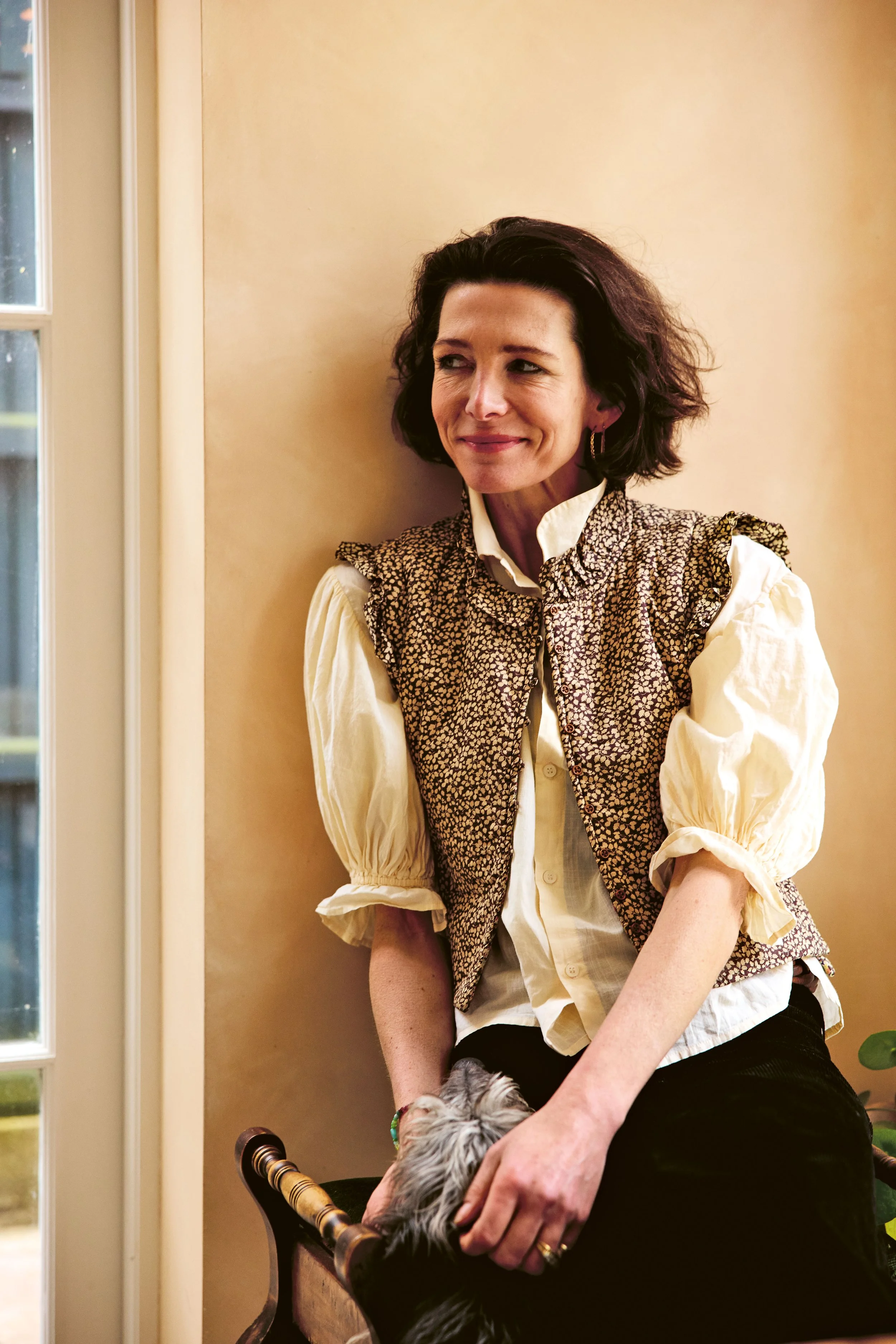Gardens with Clare Foster
AT THYME
As Garden Editor of House & Garden, Clare Foster has a remarkable knowledge and passion for nature which she shares with her community through beautifully crafted words, and on her own website, Bud to Seed, a site for stylish gardeners. From practical planting tips to identifying new plant species, Clare imparts her wisdom in a very eloquent and engaging way, enabling even the most novice of gardeners a chance to get a trowel in the door. She has joined us to chair a panel discussion in aid of our conservation partner, Plantlife, and is currently exhibiting artwork from her newly published book, Winter Gardens, which reflects on the particular beauty of English gardens at winter, captured by photographer, Andrew Montgomery. The exhibition is installed in the Tithe Barn and will run until 4th April 2022.
Where does your love of nature and plants stem from?
I was brought up with gardening parents so was immersed in it from an early age. There were four of us and we all had to muck in, digging potatoes, picking fruit and generally helping out in the garden. I lived in London for 15 years and then moved to the countryside and it felt like coming home.
What do you find most awe inspiring about English gardens?
I think it’s the breadth of style of British gardens that is so interesting. Anything goes. You can have a formal topiary garden next door to the most freeform nature garden, and each has its own place. Gardening seems to be in the DNA of British people. I was unusual, I caught the gardening bug early, in my twenties, when I had an allotment in London, and all my friends thought I was pretty crazy. Today I think that more of the younger generation is interested – maybe because of Climate Change, and also an increased awareness of the importance of nature and gardens to our mental health.
Photo by Eva Nemeth
Why did you decide to portray winter gardens in your new book?
By their very nature, gardens are dormant in winter. They recede and retreat, leaving only the bare bones, and most people turn their back on them at this time of year. There are so many books showing gardens at their peak in spring and summer; we wanted to open people’s eyes to the very different kind of beauty to be found in the garden and landscape in winter. The beauty of dead and dying stems, for example, is not something that everyone ‘gets’ immediately but when you look at the intricate detail of a plant in its seed head form, there is something truly miraculous about how nature has made it, and we wanted to open people’s eyes to this.
Photograph by Andrew Montgomery
At Thyme, we believe time in nature can be restorative. What do you find therapeutic about being in your garden?
I could write reams about this! Gardening and connecting with nature is SO important for our mental health, and I really believe that the lockdowns we have all experienced in the past two years have made more of us value our gardens and just being in nature. I find so many things therapeutic about my own garden. I love sowing seeds and nurturing the seedlings, as this always brings so much hope. I love just clearing a patch of ground and methodically weeding to bring the sense of satisfaction of a tidy flower bed. I love wandering round and looking at the bees and butterflies on the flowers, I love picking flowers for the house, and I enjoy photographing the flowers which makes me look at them in more detail. Basically, engaging with my garden in any way at all makes me feel better in myself; it focuses the mind, eliminates negative thoughts and keeps me fit. Win win win!
What would you never garden without?
My Sneeboer weeding fork. I have had one for 15 years and nothing else will do.
Where have your travels taken you and where are the most beautiful gardens you’ve seen?
I am so lucky that my job takes me all over the world to see gardens and to meet their creators. One of my very favourite gardens is Rohuna near Tangier in Morocco and it’s the creation of the Italian writer and garden designer Umberto Pasti. He has carved out a garden on a stony hillside overlooking the sea. It’s not a formal or pretentious garden, it is purely a place he loves to be, and as a result it is a very magical place. He collects endangered species of iris and narcissus and plants them in the meadows above the house, where they mix with wild gladioli.
Photo from House & Gardens
It’s November, what should we be doing in our own gardens?
In November you can start taking your foot off the pedal a little. Things are fading and you might need to do a bit of clipping back and tidying up if perennials are collapsing. I keep as many seed heads as I can as they can look ornamental over winter, and provide food and shelter for insects. I also plant my tulip bulbs in November. I like to wait until the temperatures have dropped a little before planting them, as there is less danger of fungal infection then.
You have a really lovely and inspiring website, Bud to Seed. Is your knowledge still growing and where and how do you learn?
Yes I learn things the whole time! Another part of my job at House & Garden is to interview plants people and garden owners, who are always so keen to share their knowledge. And the thing about gardening is that you never know everything. I talk to garden designers like Arabella Lennox-Boyd who have spent a lifetime doing what they do, and they say they are also still learning!
What inspiration or new perspective do you hope will be instilled after reading the book?
I really hope the book will make people look at winter gardens and landscapes in a different way. I hope it gives people ideas to take away and try in their own gardens too.
It’s a Sunday, mid winter. Where would you like to be and what would you be doing?
I would like to be wandering round one of my favourite gardens, Plas Brondanw in Wales, which is one of the gardens in the book. Its mad collection of topiary makes it one of the most magical gardens I’ve encountered, and frost or snow can only enhance this sense of mystery and magic.
The Water Meadows at Thyme
The Winter Garden Exhibition will be on view in the Tithe Barn until 4th April. The launch of the book was recently written about in the Financial Times How to Spend It in ‘The ethereal beauty of the garden in midwinter’ by Clare Coulson.






